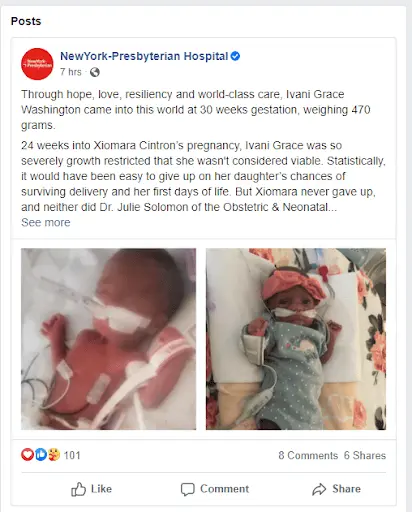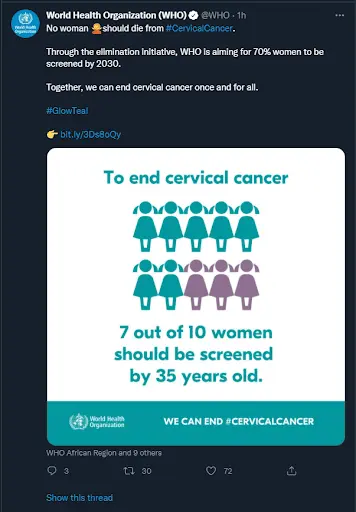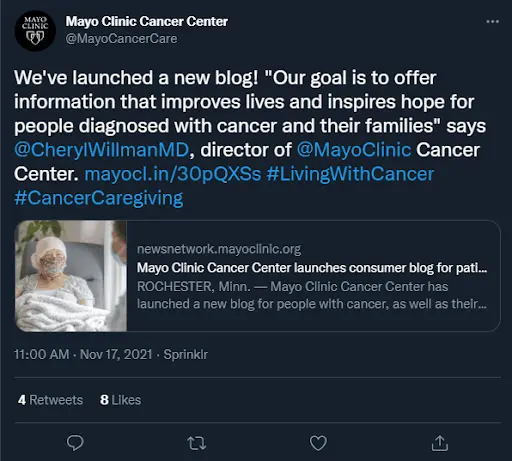Few things are more stressful than trying to navigate the healthcare system, and if patients have a bad experience on top of that, it adds to their stress and can even slow the healing process. While providers are primarily focused on health outcomes, a focus on improving patient experience is equally important.
Why patient experience is so important in healthcare
Research shows that high rates of patient satisfaction correlate directly with good patient outcomes. The bottom line is that patient experience is inextricable from the quality of care.
Aside from quality of care, patient experience is a huge factor in your reputation as a healthcare provider, and it influences whether your organization is recommended and well-reviewed (or not) by patients. If a patient has a bad experience with a physician and goes on to leave a bad review online, this could dissuade a lot of future potential patients from visiting your clinic. To put it another way, patient experience has a direct effect on your financial success — and in the highly competitive world of healthcare, that really matters.
How does patient experience influence patient outcomes?
A patient’s experience will have a great effect on how they’re feeling emotionally, and a person’s mental and emotional health affects their physical health. Simply put, if someone is stressed out and unhappy with the care they’re receiving, they’re less likely to get better quickly.
Imagine yourself in a less-than-ideal patient experience scenario: You don’t feel well and you’re waiting for test results while you lie in a hospital bed under a scratchy blanket. The doctor mispronounced your name, didn’t go into much detail about possible diagnoses and didn’t have time to answer your questions. You can hear another patient moaning out in the hallway, unattended. You’re scared, uncomfortable and unsure if you’re getting quality care. What you need to do is get some rest, but sleep feels impossible.
Good patient experience is about giving people the support they need to improve health outcomes — whether that support is attentive staff or a quiet, comfortable space.
We’ve pulled together five tips to get you thinking about how to improve patient experience at your organization.
5 ways to improve patient experience
1. Take a holistic healthcare approach
Borrowing a page from holistic healthcare’s book can create immediate, positive changes in patient satisfaction. Holistic health considers mental, spiritual and emotional health, as well as a patient’s physical health. Offering resources that support a person’s whole health can create the groundwork for healing.
Provide patients access to counselors and mental healthcare professionals if needed. Working with a therapist through a difficult time like a cancer diagnosis can be essential in helping patients cope and follow a treatment plan. Encourage regular visits from friends, family and church leaders to boost patients’ spirits. Put resources toward maintaining calm and inviting prayer and meditation spaces.
Keeping patients connected and engaged in other aspects of their health will help them deal with their illness and make them feel that they’re receiving good care.
2. Make the most of patient experience surveys
Getting feedback straight from the horse’s mouth, so to speak, is the easiest way to learn how your organization can improve patient experience. Gathering data can show you your organization’s weakest areas and potentially give you insight into creative ways to increase patient satisfaction. Consider customizing the standard HCAHPS survey to include questions about areas you’re particularly interested in.
If you’re seeing multiple responses about one department always running behind schedule or a certain physician with a cold bedside manner, you’ll have a pretty clear idea of where to focus your improvement efforts.
Don’t discount the true experts on patient experience — the patients themselves. Regularly surveying patients will let you evaluate individual staff, as well as teams, departments and facilities as a whole.
3. Create personalized patient experiences
Uncertainty causes stress. The uncertainty of what’s going to happen at the hospital and what a diagnosis means for your health is a big factor in the stress associated with health problems. Do what you can to eliminate uncertainty by making sure your organization offers consistent, personalized communication for patients every step of the way.
Here are a few ways you can use personalized communication to improve patient experience:
- Simple, printed handouts that are personalized with a diagnosis and contact information for their doctor can make patients feel at ease.
- Provide patient education brochures that include information about a patient’s specific condition, next steps in their treatment plan, future appointment times and locations, medication instructions, tips to alleviate symptoms, etc.
- Even things like doctors’ emails, notices on research studies, and flyers for hospital events and education programs can all be customized to give a cohesive look and feel to every department in your hospital.
Providing customized patient communication across your entire organization will let patients and their families know they’re in good, organized hands. They’ll be properly informed and know what to expect while receiving care at your hospital.
4. Foster employee engagement
A surefire way to increase patient satisfaction is to make sure patients are cared for by focused, committed employees. Staff who feel engaged at work are much more likely to be happy with their job and pass that on to the patient.
Employee engagement surveys are right up there with patient experience surveys in indicating the health of your organization. Soliciting employee feedback, and then listening and responding to it, is an important step in making your staff feel heard and valued. Take steps to offer regular, clear views into how employees contribute to your hospital’s mission. Give managers the training they need to create open, trusting relationships with their staff.
Focusing on employee engagement will pay off double in that you’ll end up with happier employees and happier patients.
5. Emphasize emotional intelligence
Feeling dismissed by staff or a physician is a common complaint among patients. Teaching your staff to provide kind, calm, compassionate care is one of the best ways to improve the patient experience.
Healthcare providers experience more than their fair share of stress, being subject to long shifts, unexpected events and life-and-death situations. Learning to manage their own stress and emotions can help your staff be better in tune with patients’ nonphysical needs. That way doctors and nurses will be able to accommodate and support patients as they deal with health problems.
Company-wide training for emotional intelligence can benefit every single person at your organization and make for an all-around more compassionate environment.
Improving the patient experience will take a comprehensive effort. Thomas H. Lee, MD, a primary care provider at Boston’s Brigham and Women’s Hospital, put it well when he said, “The real goal has to be cultural change.”
In the healthcare industry, direct and immediate communication between patients and hospital staff is essential. The health of patients can depend on a clear and concise exchange of information. Too many of us may have personal instances where navigating the healthcare system was frustrating because of a lack of communication or a bad patient experience. Thankfully, we’ve seen a recent shift in the industry to a more patient-friendly approach with the emergence of online reviews, surveys that measure patient satisfaction and in-house training for better communication in hospitals.
But there are still major failures in communication between patients and healthcare personnel, along with failures among healthcare teams, that can lead to medical errors and patient harm.
Overall impact of communication failures
Current research has shown that failures in communication among healthcare professionals are one of the leading causes of patient harm and medical errors. In fact, 80% of medical errors involved informational or personal miscommunication. Additionally, 70% of sentinel events include communication breakdowns as one of the root causes of preventable patient injury. As more research has been conducted, it’s shown that ineffective or insufficient communication among healthcare team members is one of the biggest contributing factors to adverse events.
In order to improve patient safety and outcomes, healthcare organizations need to start improving communication in hospitals between professionals and patients, but especially among their own medical teams.
Ways to improve hospital communication
1. Encourage mobile collaboration
Most healthcare facilities still rely heavily on pagers as a means of communication. They are an effective way to get in contact with someone if you need to speak with them immediately, but they aren’t great for a two-way conversation that could include a litany of technical information. Many professionals also find it difficult to respond to emails as they hurry from patient to patient. A great solution is to use a mobile team communication app. Many healthcare organizations provide mobile devices to their staff as a way of bridging this gap between the restrictiveness of a pager and time-consuming email.
Over 80% of American adults own and use a smartphone, making it a convenient and effective form of communication between healthcare professionals and patients along with communication between healthcare professionals themselves.
2. Implement team huddles
A team huddle is a quick meeting between a healthcare team at the start of the day or shift with a specific focus on distributing pertinent patient information from the previous team. These mini-meetings include operational and care personnel ensuring that all healthcare providers are on the same page for a patient, ward, or department. Recent research has shown that daily team huddles have resulted in fewer interruptions during the day/shift and provide immediate clarification of issues. These meetings have also been shown to help teams identify pertinent issues of the day, giving teams a chance to prioritize and assess changes in clinical workload. Plus, they enhance staff cohesion and teamwork.
To ensure effective team huddles, follow these guidelines:
- Use a consistent location
- Set a standard time each day
- Make huddles mandatory
- Don’t sit, stand up
- Keep it short (15-20 minutes)
- Begin and end on time
- Keep the agenda limited
3. Provide communication training
According to Anthony Orsini, DO, president and founder of The Orsini Way and practicing neonatologist, communication training can achieve cultural change at hospitals by rewiring the way professionals communicate. Organizations that have used Dr. Orsini’s communication training have seen significant improvements in HCAHPS scores along with improved patient satisfaction.
Consider looking into a communication training program for your department or entire hospital staff. Pick one that includes specific training in communication techniques along with verbal and nonverbal language skills.
4. Facilitate cross-department collaboration
One barrier to effective communication especially during handoffs is the misunderstanding between professionals from different departments. Two healthcare professionals in the same field can communicate quite easily due to sharing the same jargon, experience and training. But specialists in different fields can easily miscommunicate especially in situations like operating rooms where several different types of caregivers are involved — surgeons, nurses, anesthesiologists, etc.
Cross-training and collaboration can be accomplished by having a nurse from one unit take a shift on another unit. Another way to accomplish this is to have departments learn about each other through meetings and having conversations outside of handoffs.
5. Templatize communication collateral
A final way to improve hospital communication is to templatize provider letterhead along with flyers for research studies and announcement displays. Using templates for in-house communications along with communications within the community can make it easy for doctors, nurses and other house staff to create on-brand content quickly, allowing them to maintain communication with patients and the community. With a platform like Lucidpress, healthcare organizations can provide their personnel with professional templates while also giving them autonomy to create their own content under approved parameters.
Implementing these five steps can help you improve overall hospital communication among your medical teams and between healthcare professionals and patients. Read our article about how to improve the patient experience to learn more.
As patients become more knowledgeable about their own health thanks to the internet and modern medicine, they’re also becoming more savvy healthcare consumers. This evolution means branding in healthcare marketing is taking center stage. A healthcare brand’s digital presence and online reputation are quickly displacing word-of-mouth and local referrals. In fact, research shows that 84% of patients trust online reviews as much as they do personal recommendations.
However, healthcare branding isn’t really about a catchy tagline or a well-designed logo. Medical branding is increasingly a product of how your healthcare organization is perceived in the marketplace and the foothold it has among respected professionals. Whether you invest in cultivating a brand identity or not, your healthcare brand is based on the trust it invokes among patients, doctors, nurses, and other healthcare experts. Here’s why that industry reputation matters and what you can do to develop a better healthcare branding strategy.
Why healthcare branding matters
There are lots of reasons to be intentional about developing your healthcare brand. Below are several that highlight the critical role of branding in healthcare marketing and how it plays into our perceptions about whether a provider is trustworthy, professional, and competent.
Branding in healthcare marketing has changed
The rise of technology in our lives means society is constantly evolving, and the healthcare industry is no exception. The Affordable Care Act has created online healthcare marketplaces that put the consumer front and center. Gone is a healthcare landscape shaped primarily by the limitations of insurance providers and employers. It has been replaced by an online environment where healthcare consumers have a wealth of knowledge and patient reviews at their fingertips.
The healthcare marketing space is highly competitive
A radical shift has taken place in the health industry that has moved the focus from treatment of disease to prevention and testing. This trend opens up many new avenues of healthcare services for both patients and providers. Competition in the healthcare space is fierce, with a growing emphasis on patient satisfaction and health brands that sell directly to consumers rather than through providers. This evolution in care means medical branding needs to catch up, especially in digital marketplaces.
Patients have more choices in the health industry
While location and insurance providers used to shape a vast majority of healthcare decisions, consumers now have more options. This means that catering to the customer and paying attention to the reputation of your health brand is an integral part of any healthcare marketing strategy. Research shows consumers are increasingly weighing the delicate balance between cost and provider reputation versus simply accepting whatever provider is closest and in-network.
Medical branding is about establishing trust
Perhaps more than any other industry, healthcare organizations build value into their brands by establishing trust and practicing transparency. This can be communicated not only through being transparent about the costs associated with care but also via healthcare marketing and branding. Each and every piece of a branding strategy, from the professionalism of marketing assets to the way your organization supports patients on social media, can contribute to this perception of public trust.
6 steps to better healthcare branding
Looking to create a more confident and consistent healthcare brand strategy? Following these steps can set you on the right path to building a healthcare brand that fosters patient trust and inspires confidence.
Study the healthcare marketing competition
To better position your healthcare brand in the marketplace, it makes sense to study the competition. Take in the healthcare industry landscape and study what successful health brands do to differentiate themselves. Note whether they pursue marketing strategies like patient loyalty programs, community service campaigns, and partnerships with other providers.
Some companies that are household names like CVS or Cigna have a different patient base, so study medical professionals and practices that offer the same services or products. Read reviews and check out social media platforms to glean insights about how they’re connecting with healthcare consumers. Look for ways in which you might leverage technology, including apps and telemedicine, to capitalize on market insights and better meet patient needs.
Articulate your healthcare brand story
Your healthcare brand is more than whatever logo or tagline makes it to your website or on pamphlets. A brand identity is the story patients and providers tell about you whether they’re at a private practice, at local hospitals, or online. If you haven’t been intentional about creating a healthcare brand story, chances are consumers have already begun to shape one for you. Look online and take stock of your brand identity and identify what you’d like to change.
You can take control of the narrative by deciding what your healthcare brand story is and how to articulate it. Focus not only on the elements of your visual identity that define your brand identity but also how the content you share communicates what matters to you. Stories are about creating connections with your audience, so carefully consider where your brand storytelling takes place. Even baby boomers, who are the most likely demographic to consume healthcare services, report their lives are shaped by daily social media use.
Develop a healthcare brand strategy
Your healthcare branding strategy should be one that helps you stand out in a competitive marketplace. To cut through the noise in the industry’s busy marketplace, it’s essential to hone your healthcare marketing message. That means considering every element of what you do, from patient outreach to patient follow-up, and asking yourself one very critical question. Does this marketing effectively communicate our healthcare brand and identity?
Because trust and professionalism are crucial to success in the healthcare industry, it’s also important that your marketing assets are consistent and high quality. Lackluster design and sloppy content on your website or social media channels could create the impression the medical services you offer are equally haphazard. Lucidpress can help with brand templates that make it easy for hospitals, clinics, and medical practices to design professional-looking branded content.
Lean into your health expertise
It used to be that medical practices and hospitals acquired patients as a matter of practicality either because of insurance coverage or a location that was convenient. Increasingly, patients look for healthcare providers that are best in class, even if it means they have to travel a little farther or pay a little more. Take, for instance, the success of the Mayo Clinic in capitalizing on its reputation for excellence and using that to catapult its online presence through expert content.
Lean into what you do best and let the professionals in your practice shine. Look for ways to feature educational content, engaging videos, and interviews on your website or social media. Consider partnering with other high-profile, reliable publications. Getting featured in medical journals and magazines produces an enticing bonus because it creates backlinks to your website and can be a boon for your online search ratings.
Focus on the patient journey
Shaping your healthcare branding around the patient experience can be a powerful way to communicate priorities and market your practice. Focusing on the patient journey starts with prospective patients and encompasses every step of their healthcare decisions. Making the patient experience a touchstone of your healthcare branding strategy means listening carefully and committing to putting healthcare consumer needs first.
Consider how your healthcare brand handles not only the services or products you provide but also how you conduct outreach to prospective patients and follow up with current ones. Every step of that journey is an opportunity to provide a personalized touch and a seamless experience from the moment they stumble across you online to the time they spend healing at home. Your healthcare brand has the chance to build a world-class reputation that speaks not only to the quality of the services you provide but the medical professionals you employ.
Every member of your organization is a brand ambassador
High-profile stakeholders like board members or prominent physicians may be the public face of your healthcare marketing campaign. But every employee from the social media manager to the clinic receptionist and even former patients are potential ambassadors for your healthcare brand.
Whether these team members connect with patients online or in person, they are your brand’s most powerful advocates. It’s helpful if they walk the talk and are on the same page when it comes to your brand story and marketing strategy. And it’s imperative everyone in your organization understands that every interaction during the patient journey has the potential to make or break your brand reputation.
The current healthcare landscape may be competitive, but within all that bustle and noise is an opportunity to empower patients and create better-informed healthcare consumers. Building a dynamic, thoughtful digital healthcare brand can capitalize on that unique opportunity and establish stronger connections of trust and transparency between healthcare providers, healthcare consumers, and the communities they serve.
Patient engagement is touted in both healthcare marketing plans and clinical settings as a strategy to produce better health outcomes and, ultimately, a better patient experience. But a close inspection of the intersection of marketing strategies and patient engagement shows that in many healthcare settings, the effort to become patient-centric has not produced effective patient engagement.
Let’s take a closer look at what patient engagement means, why it matters, and how to create patient engagement strategies that connect to better outcomes, reduced costs, and more fulfilling experiences for both patients and clinicians.
What is patient engagement?
Patient engagement is defined as a patient actively engaged in their own healthcare decision-making. At its best, patient engagement is a partnership between patients and clinicians in which they share information, foster healthy behaviors, and craft treatment plans to manage conditions and produce desired health outcomes.
Patient engagement should not be confused with patient satisfaction. While engaging patients in their own care may lead to better satisfaction with the patient experience, the two terms are not interchangeable.
Why patient engagement strategies in healthcare matter
Studies have consistently shown that patients who are actively engaged in the management of their own care and treatment plans achieve better health outcomes. Patients benefit from responsive providers who are willing to engage in the kinds of ongoing dialogues that foster trust and transparency in the healthcare decision-making process.
This kind of relationship-building and communication can be hard to come by in clinical settings for a variety of reasons. In a 2017 survey, 555 healthcare leaders and clinicians cited an inability of the healthcare team to invest time as the largest obstacle to integrating patient engagement strategies into care delivery plans.
5 tips for fostering patient engagement in healthcare
Helping patients become more involved in their own care reaps benefits for everyone involved, including healthcare professionals. Here are five ways to foster patient engagement throughout the patient journey.
Educate patients for better health outcomes
Educating patients can take many forms and extend far beyond the traditional pamphlets providers send home after a visit to the clinic. Consider expanding patient education initiatives to include more detailed information about prescriptions and dosages, newsletters on healthy habits, and reminders regarding overdue preventative screenings and tests. Studies have also shown that accessible communication is the key to successful engagement, so avoid medical jargon in patient educational materials.
Invest in the relationship between clinicians and patients
A 2019 study found that other than a scheduled visit, 70% of respondents had not heard from their primary care provider in the last two years. It’s difficult to build a relationship or foster trust without communication, and healthcare settings are no exception. Clinicians need to be aware that patients may hesitate to reach out for fear of seeming troublesome or difficult, so checking in periodically can reassure patients and help concerns surface.
Better patient engagement is about empowering the patient experience
It can be easy to get patient engagement and the patient experience confused. In fact, the two are closely related. Empowering patients to make their own decisions throughout the healthcare journey can have a profound impact on the patient experience. Every step in the journey, from making an appointment to following up on aftercare, is a chance for a clinician and the rest of the healthcare team to provide the best possible resources and encourage patients. After all, every patient is a critical stakeholder invested in their own health outcomes. As stakeholders, patients should be kept fully informed about their healthcare “investment” and given every chance to help it be successful.
Personalize healthcare experiences with custom content
Encouraging patient engagement can come off as formulaic. Often patients may just take that aftercare or at-home treatment pamphlet they’ve seen five times before and toss it in the trash. That’s why healthcare marketing materials and patient education digital assets need to focus on effective, customizable content. Forms that can be personalized to include notes from the appointment, information about integrating treatment into a busy lifestyle, or advice about overlapping conditions create personalized content that won’t end up in the dustbin.
Use technology and telehealth tools to drive patient engagement
Patients and providers have more tools than ever to connect and communicate. Electronic health records, telehealth tools, and patient billing portals allow patients to coordinate their own care. By encouraging patients to leverage the online tools and technology at their disposal, health professionals can foster greater levels of engagement. Multiple studies confirm the ability to coordinate treatment between healthcare teams remotely and the use of telemedicine tools to monitor outcomes can have far-reaching benefits for both patients and clinicians.
Medical marketing can be challenging in an online environment of huge healthcare conglomerates, but there are some healthcare marketing strategies that can help your practice stand out in a crowd. Despite some of the high advertising costs for medical terms in the digital marketing space, connecting with prospective patients and promoting your practice doesn’t have to be a costly endeavor.
The following healthcare marketing ideas can help you get beyond traditional healthcare advertising and reach referring physicians and new patients who can expand your practice and ensure success in a highly competitive industry.
10 healthcare marketing ideas and strategies
While marketing in healthcare can seem confusing, healthcare marketing trends closely mirror trends in other industries. The following healthcare marketing ideas distill what works in other digital marketing spaces and apply them in ways that can be a huge benefit to your practice.
1. Create educational content for patients and physicians
People use the internet to stay informed about every aspect of their lives, including health and wellness. You can leverage that interest by creating content that speaks to what potential patients might be concerned about. Fortunately, healthcare content that gets clicks such as those listed below doesn’t always require hiring a content marketing agency.
- Blogs or articles: You can feature educational content on your own website or look for opportunities to guest blog or be featured in other online publications. Guest blogging has the built-in bonus of framing you as an expert in the field, and it can bring your practice to the attention of a fresh audience of patients and other physicians. Getting featured on another site also promotes backlinks to your webpage, which can improve SEO (search engine optimization).
- Videos: You may have heard that video is currently king of social media, and healthcare marketing is no exception. Not only does video drive better ranking on Google, but it can elevate your social media profiles and drive engagement in digital marketing channels like YouTube and Facebook. Check out TikTok to see how creating short, easily digestible videos doesn’t have to be rocket science.
2. Know your competition and your healthcare marketing trends
Researching other medical professionals online can offer some insight into how to make your own practice stand out. Make sure the contact information for your practice, clinic or hospital comes up easily in search and is listed in various directories from Yelp to Yahoo and Google. And don’t forget about industry-specific sites like Healthgrades.
Also be aware of what kinds of digital technology your competitors are offering patients. Health apps and telemedicine are leading the digital healthcare revolution, and utilizing these tools can signal to patients and physicians that you’re an industry leader.
3. Smart medical marketing is about keeping it local
One often overlooked component of healthcare marketing is the clear advantage of focusing on local digital marketing campaigns. Most patients prefer not to travel outside their own communities for check-ups and medical procedures, so localized SEO is crucial.
Showing up at the top of the local search results, sometimes referred to as the Google 3-pack, isn’t as easy as claiming your listing on Google. Ranking top of the pack involves citation building, consistently updating your profile, and snagging plenty of those coveted five-star reviews.
4. Cultivate reviews and be responsive on social media
Speaking of reviews, there are few things that drive positive impressions quite like authentic details of a patient experience. And recall that patient experience is more than whatever medical procedure or physician interaction happens. It’s also about how your practice manages patient anxiety, financial details like billing, and a space that supports open communication.
Soliciting patient feedback via surveys and requesting online reviews are all vital healthcare marketing strategies, but remember not to neglect your social media presence. Staying connected with patients means being present in online spaces that they might consider extensions of their community.
5. Develop consistent branding and digital marketing assets
The digital marketing assets you use for healthcare advertising should be consistent, high-quality messaging that conveys your brand. While you might feel confident about your expertise, online users only know what your healthcare marketing strategies communicate. If your healthcare marketing seems outdated or unprofessional, it can suggest the medical services you offer don’t embrace modern medicine.
When it comes to keeping your healthcare marketing messaging consistent, Lucidpress can help. Check out our brand templating platform that can help hospitals and medical practices spend less time designing quality branded content that attracts new patients.
6. Leverage relationships with existing and previous patients
While attracting new patients is often the focus of many medical practices, don’t forget your existing and previous patients can be a goldmine. Not only can retargeting this group to promote services and procedures be an overlooked component of marketing in healthcare, but rewarding those patients for loyalty can lead to increased satisfaction.
Both other physicians and previous patients can be your best sources for referrals, so make sure outreach to this group is a central focus of your healthcare marketing strategies.
7. Put the hospitality in hospital marketing strategies with an open house
Both virtual and in-person open houses can help increase the visibility of your practice and help it become a cornerstone of the community. When someone asks for a referral, you want your practice to be top of mind, even if those in your community haven’t been patients.
Unfortunately, “build it and they will come” isn’t usually how healthcare marketing works. But you can foster a more successful event by offering incentives. Think about how to create connections and leverage relationships with community leaders to encourage participation. Don’t hesitate to offer the traditional incentives people usually enjoy at open houses, such as great food and fun activities for families.
8. Optimize your website to provide a better healthcare marketing experience
You’re trying to market your services, but visitors to your website are probably just trying to find information quickly. A good user experience on your website sets a precedent that you’re a provider that cares about patient support and customer service. Think of your website as the lobby of your practice. Does it reflect how you’d like patients to be greeted and the information you want them to have access to upfront?
Here are a few things to consider when evaluating the user experience on your website.
- Does your website work well on mobile devices?
Going mobile can be tricky, but your website should adjust automatically to accommodate different browsers and devices. It should also have fonts that are easy to scan in sizes that don’t need to be adjusted for mobile viewing.
- How are users coming into your website?
Depending on your ranking in Google and which terms are driving search results, your main page might not be how patients are finding your website. Conduct an audit to determine how users are finding you online and what page they land on when they arrive at your website.
- Does your website load quickly?
Large images and other assets that aren’t optimized can lead to long load times for pages on your site. Think of the effect as similar to that of the waiting room at your clinic or the hospital. If the wait time is too long, patients will simply leave and go elsewhere.
9. Effective communication is one of the best healthcare marketing strategies
When every team member is communicating effectively and consistently, it can drastically improve the patient experience and healthcare outcomes. In fact, communication errors were the root cause of nearly a third of medical malpractice suits, according to a 2016 study from CRICO Strategies.
But overcoming bottlenecks, department silos and other dynamics can often make cleaning up clinic and hospital communication challenging. Leveraging technology to provide channels for two-way consultation, implementing team huddles, templatizing patient communication, and promoting cross-functional collaboration are all solid strategies for improving your clinic or hospital communication.
10. Try a physician liaison
Don’t wait until all else fails to explore an outside perspective. Physician liaisons specialize in growing referral programs and work to help your medical practice make the right connections in the community.
If you don’t have the budget to devote to a formal liaison, identify someone from your healthcare marketing team to work on forging relationships with physicians and beefing up your referral program. A little extra focus on these relationships can pay big dividends in growing your patient base.
Evaluate the return on investment you currently get from healthcare advertising and consider whether exploring one or several of these healthcare marketing ideas could be the right move for your practice. In today’s fast-paced, social media-focused environment, traditional medical marketing approaches may need an update to keep pace in an increasingly competitive industry.
While other industries raced to embrace social media platforms to connect with customers and create loyal brand followings, healthcare social media marketing has been more tentative. Many hospitals and healthcare organizations cited concerns like HIPAA and professionalism as reasons not to be actively involved in digital marketing on social media channels.
However, social media healthcare marketing has come a long way in the last few years and is beginning to transform how we interact with and access health information online. Healthcare marketing teams have recognized the outsized role social media can play in driving conversations on topics like preventative care and public health measures.
Why social media healthcare marketing matters
From helping navigate healthcare crises to making patients feel more comfortable seeking care, healthcare organizations are beginning to use their social media presence to connect in meaningful ways. Here are just a few reasons healthcare social media marketing content matters.
Creating a sense of community
Communities aren’t just physical spaces anymore. Healthcare organizations that invest in a robust healthcare social media marketing strategy can become trusted members of an online community by being present and interacting with patients.
Connecting with a new audience
Hospitals and clinics used to exclusively rely on word-of-mouth referrals or simply being the closest local provider to win over patients. Today’s digital marketing and social media channels allow hospitals and clinics to reach new audiences and build a national brand.
Establishing trust in online spaces
One of the unspoken rules of the internet is if you don’t answer the question, someone else will. As most providers know, Dr. Google is not a good substitute for medical expertise. Healthcare social media channels are fantastic avenues to answer patients’ frequently asked health questions, provide professional advice, and correct health misinformation.
7 tips for effective healthcare social media marketing
Using social media channels to market your healthcare organization can be a tricky balancing act. Unlike businesses that can showcase products and strut their stuff openly, hospitals and clinics have to be wary about HIPAA concerns and medical ethics. However, that doesn’t mean social media platforms can’t be leveraged in the following ways to benefit both your organization and the public.
1. Focus on the patient experience
Going behind the scenes and highlighting the patient experience can be a profound way to connect to followers. It also offers the opportunity to indulge in a little healthcare social media marketing by showing off the expertise and services your organization provides. Take, for instance, this Facebook post from New York-Presbyterian Hospital that showcases the incredible neonatal care a patient received and how it helped her triumph over the odds.

When you do a deep dive on a patient experience, be sure you have their express permission to share that content or to amplify social media posts. Shout-outs for other user-generated content like reviews also demonstrate you’re engaging in social listening and can go a long way toward making patients feel seen and heard.
2. Combat misinformation
The proliferation of health misinformation on social media cannot be overstated. A 2021 study from the Journal of Medical Internet Research indicates as many as 87% of social media users are affected by health misinformation on the platforms they frequent. Reputable medical organizations can play a role in correcting and minimizing the harm misinformation causes.
Social media healthcare marketing creates space for trusted voices of medical providers to deliver reassurance and fact-based medical advice. For instance, the American Academy of Pediatrics has long been considered an authority in pediatric medicine, and its advocacy for vaccination is the cornerstone of a powerful and persuasive public health campaign.

3. Educate the public
Alongside fighting the spread of misinformation, healthcare social media marketing content is an effective educational tool. Keeping up with research and helping the public understand its relevance to current practice goes a long way toward establishing your credibility on social media.
Organizations like Cedars-Sinai that have their own health information databases can use social media channels to not only distribute these articles but also drive engagement with the hospital’s website and improve search engine rankings.

4. Shine a light on preventative care
Raising awareness is one of the crucial ways healthcare organizations have an outsized impact on social media. But it’s also an effective means to market preventative services that can really make a difference in medical outcomes. Take, for instance, the World Health Organization’s campaign to end cervical cancer by promoting screenings for 70% of women around the world.

Preventative care campaigns are also an excellent opportunity to create a partnership with another healthcare organization. Tackling the social media healthcare marketing campaign together can amplify the reach of your content and expand your audience.
5. Become a trusted source
As you invest in healthcare social media marketing, you’ll want to pay special attention to becoming a source of trusted healthcare information and an authoritative voice in the industry. The best way to accomplish this is to look for ways to highlight the fantastic talent within your organization.
The Mayo Clinic is renowned for its social media prowess, and it’s built a powerhouse brand because of it. The secret sauce to Mayo Clinic’s success is to lean into its world-class doctors and cutting-edge researchers as the face of the organization. They are repeatedly put front and center in social media channels, allowing these trusted professionals to reach millions of followers.

6. Create a community of support
Social media platforms are online communities, and as such, they can be tools to create support for patients and their families. Even if your healthcare organization doesn’t have the bandwidth to support patient communities as part of its healthcare social media marketing strategy, you can act as a catalyst to connect people to resources.
This approach is particularly helpful for hospitals and clinics that treat a large community of patients with chronic conditions and life-threatening diseases such as cancer. By giving patients the means to connect, you create a sense of community between your providers, patients, and the families you serve.

7. Destigmatize sensitive topics
Some healthcare topics can be a little sticky on social media, but allowing your providers to wade into those waters as trusted professionals can destigmatize important topics. And it serves your social media healthcare marketing strategy both by establishing trust and encouraging your followers to become more involved.
Doctors without Borders consistently exceeds fundraising goals, and it does so in part because the organization’s social media presence has a commitment to advocacy and tackling stigmatized topics with fact-based health advice.

So while healthcare orgs can’t fill their social media timelines with brand ambassador endorsements or swag giveaways, there is a real opportunity for hospitals and clinics to provide trusted, sound medical advice from licensed practitioners. This approach can create healthcare social media marketing content that cements your healthcare brand’s reputation, reaches new patients, and expands your influence both online and within your local community.
Knock your healthcare social media marketing goals out of the park with our free ebook.